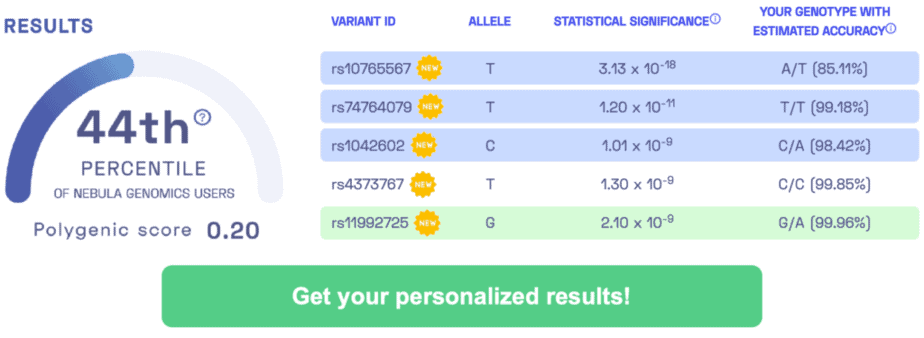STUDY TITLE: Multi-ancestry GWAS of the electrocardiographic PR interval identifies 202 loci underlying cardiac conduction
SUMMARY: Discovery of 202 regions of the genome associated with the heart’s PR interval duration.
OVERVIEW: The heart beats at regular intervals to pump blood through the body. To control the timing of a heartbeat, the heart relies on a system that sends electrical signals to the heart’s muscle cells. The electrocardiogram, or ECG, is a commonly used medical procedure to measure the electrical activity during a heartbeat. The PR interval is the time between the activation of the heart’s atria and the activation of the ventricles. A normal PR interval duration is between 0.12 and 0.20 seconds. A PR interval duration that is too short, too long, or irregular can be an indication for heart disease. The genome-wide association study examined nearly 300,000 individuals of European, African, Hispanic, and Brazilian descent to identify variants associated with the heart’s PR interval duration. The researchers identified 202 genomic regions, 141 of which are novel. Some of the variants are near genes involved in the development and contraction of the heart’s muscles. Together, the identified variants may explain over 62% of the heritability of the heart’s PR interval duration.
DID YOU KNOW? The average human heart beats between 60 and 100 times per minute while resting. This adds up to over 100,000 times per day! Many factors influence heart rate, including fitness, stress, body size, temperature, and diet. [SOURCE]
SAMPLE RESULTS: Learn more about the Nebula Research Library.

PR INTERVAL-ASSOCIATED VARIANTS: rs6801957, rs3807989, rs2624021, rs4246224, rs3891585, rs1124477, rs6730558, rs29795, rs2754171, rs35712872, rs11153730, rs10883908, rs6441111, rs2503715, rs12869776, rs116532272, rs4245338, rs2732814, rs4677294, rs61989382, rs35680304, rs10882644, rs114555443, rs2042995, rs60325252, rs1531447, rs72690486, rs4834347, rs4971089, rs757416, rs17496249, rs10039283, rs340397, rs72671655, rs4975572, rs13131421, rs6795775, rs6442433, rs2004851, rs7394152, rs881299, rs41306688, rs17026114, rs4871397, rs982521, rs6922960, rs1084537, rs6496452, rs3759310, rs763076, rs117443987, rs2137897, rs4687352, rs56352403, rs1692144, rs12443745, rs72825038, rs2070464, rs16989138, rs11921457, rs871728, rs1285678, rs74772720, rs2970854, rs730506, rs35214871, rs7199856, rs12616546, rs74537277, rs3768419, rs4959193, rs57214150, rs1255908, rs13006682, rs4680046, rs2912774, rs12751675, rs4894803, rs1816959, rs62441680, rs4868384, rs12808601, rs62008078, rs17441816, rs6678632, rs28414612, rs4584185, rs61824886, rs58577564, rs28468565, rs10862858, rs78810186, rs1015149, rs35006907, rs2629745, rs62003514, rs8039168, rs28634651, rs6560168, rs11894252, rs1188285, rs4519566, rs2625322, rs7146955, rs6023939, rs17099893, rs1769758, rs12961264, rs7972416, rs206708, rs9513995, rs442177, rs11786896, rs10776558, rs3784192, rs55866125, rs603901, rs2004359, rs10770646, rs62472627, rs1786595, rs3795063, rs214502, rs13023533, rs3759579, rs3935716, rs76611452, rs76909456, rs17712080, rs7529220, rs78518764, rs79321945, rs94111, rs4869412, rs67234920, rs28540500, rs1037100, rs12654442, rs12190287, rs287606, rs74813029, rs4720244, rs9865051, rs2947080, rs179145, rs77422711, rs17816356, rs904199, rs111551996, rs7043482, rs12885183, rs7774, rs35816944, rs10106406, rs111739590, rs8904, rs12031946, rs1000368, rs9909004, rs6961768, rs10226357, rs36034102, rs2577531, rs2642608, rs4921804, rs9634754, rs67968533, rs7588761, rs9607805, rs2006122, rs144789148, rs4026608, rs10802580, rs1186818, rs1407243, rs2172448, rs56317071, rs7584373, rs13447455, rs819636, rs6728830, rs2179452, rs4545054, rs1475267, rs113394178, rs6800641, rs6587924, rs531706, rs745570, rs7916672, rs553951, rs11083300, rs12801636, rs11031737, rs1424569, rs138711926
ADDITIONAL RESOURCES:
The electrical conduction system of the heart (Video)
What is an ECG?
YOU MAY ALSO BE INTERESTED IN:
Stroke volume (Pirruccello, 2020)
QT interval (Arking, 2014)
Left ventricular ejection fraction (Pirruccello, 2020)
WEEKLY UPDATE: June 2, 2020
